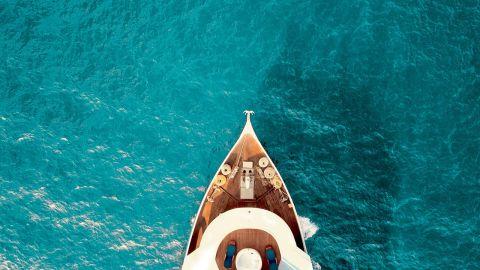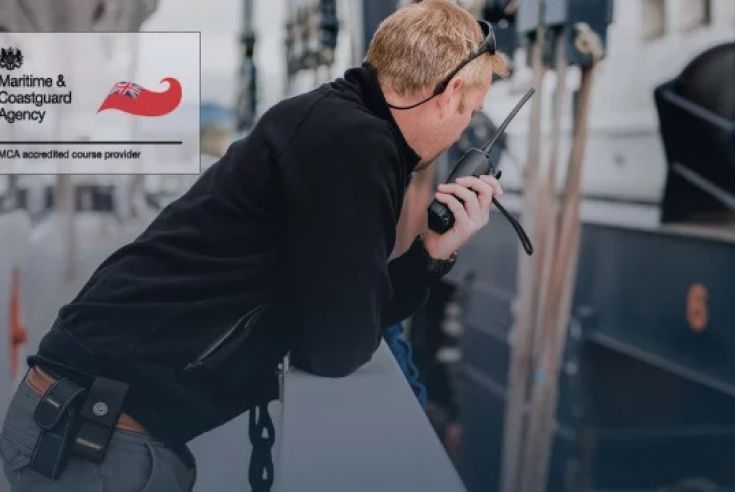MCA Master <200gt / OOW <500gt - Oral Preparation
The Seamanship Centre, Killybegs Harbour, F94 V8WH
690 EUR (€)
EnquireSchool The Seamanship Centre
Location The Seamanship Centre, Killybegs Harb...
Duration 4 day(s)
Dates Contact for more info
Accommodation None Included
The Oral Preparation Course is designed to give the student full preparation for the MCA Master’s Oral Examination, However the content is very suitable for those hoping to pass the Skipper Full, Master Yachts, Second Hand Full etc.
The course includes basic revision and practice oral sessions on a one to one basis. This covers the following topics, Navigational Safety, Plan and Conduct a Passage Including Chartwork and Position Determination, Meteorology, Maintain a Safe Navigational Watch, International Regulations for Preventing Collisions at Sea IRPCS, Response to Emergencies, Operational Safety and Pollution Control, Seaworthiness of the Ship, Business and Law.
Navigational Safety
A.Plan and Conduct a Passage Including Chartwork and Position
Passage planning with respect to use of navigational publications including navigational charts, sailing directions, light lists, tide tables, radio and navigational warnings
IALA system of maritime buoyage A and B
Limitations and sources of error of electronic chart and navigation systems
Radar and ARPA – practical use of, modes of operation, limitations and sources of error, including basic radar plotting techniques
Understands the importance of regular checking of the vessel’s position and action to be taken if found off track
Applies variation and deviation to convert true course to compass course and vice versa; understands the basic causes of variation and deviation
Fixes a ships position on the chart given magnetic bearings and/or radar ranges and quotes position by latitude and longitude
Finds the magnetic course to steer and the ETA at a given destination given the starting position and log speed
Identifies transits and clearing marks from the chart in order to plan a safe approach to harbour or anchorage
States the meaning and explains the significance of chart symbols and abbreviations in common use
Knows how to obtain and use weekly notices to mariners in order to correct charts
Finds the time of high and low water, and predicts intermediate heights and/or times for standard and secondary ports
Find and predict set and rate of the tide from tidal reference points on the chart, and tidal stream atlas
B. Meteorology
Knows the sources of meteorological information
Interprets weather forecasts including knowledge of characteristics of various weather systems
Ability to use and interpret information obtained from shipborne meteorological instruments
C. Maintain a Safe Navigational Watch
A thorough knowledge of the principles of navigational watchkeeping at sea, including watchkeeping at anchor; as STCW Code A-VIII and ICS Bridge Procedures Guide
Understand the use of bridge equipment, including echo sounder and Navtex
Knowledge of steering control systems, including automatic pilot and operational procedures and change over from manual to automatic control and vice-versa
Maintain navigational records
Knows the circumstances under which the Master should be called to the bridge
Knows the principles for handing over and relieving the navigational watch – 30 –
4. International Regulations for Preventing Collisions at Sea (ColRegs)
A thorough knowledge of the ColRegs including:
requirements for proceeding at a safe speed and keeping a lookout
recognises the lights and shapes, and fog signals for all classes of vessel
recognises the manoeuvring sound signals
recognises light signals
recognise a developing collision situation by compass, radar or visual reference
states the actions to be taken by day and night to avoid collision
describes the precautions to be taken when navigating in or near areas of restricted visibility; assess the likely likelihood of collision of vessel detected by radar alone and action to be taken to avoid a collision
describes the requirements for navigating in or near traffic separation schemes
describes the requirement for navigating in narrow channels Response to Emergencies, Operational Safety and Pollution
Control
5. Distress Signals and Communications
States the conditions under which distress signals may be used; understands the various types of distress signal, action to be taken on receipt and the obligations to render assistance
Understands the correct use of pyrotechnics, EPIRBS and SARTS including the appropriate circumstances for their use
Understands correct distress communications procedures including the terms Mayday, PanPan and Securité messages
Emergency communication with the GMDSS regulations
6. Manoeuvring the Vessel
Preparation for getting under way, duties prior to proceeding to sea, making harbour, entering a dock, berthing alongside quays and jetties or other ships, and securing to buoys
Use and care of mooring lines and associated equipment
Helm orders, conning the ship, effects of propellers on the steering of the ship, effects of wind and current, stopping, going astern, and turning short round
Action in event of failure of bridge control, telegraph or steering gear, including emergency steering arrangements
Procedures for anchoring
Understand the precautions to be observed when using winches and windlass
Understand the precautions to be observed when mooring and un-mooring
7. Responses to Emergencies
Initial action following: man overboard, collision, grounding, flooding or major mechanical damage, initial damage assessment and control, protection of the marine environment
Knowledge of fire prevention, use and care of fire-fighting appliances, the shut-down and isolation of plant and equipment, escape and breathing apparatus, fire and safety plans
Use and care of lifesaving appliances and equipment including, immersion suits and thermal protective aids, pyrotechnics and line throwing apparatus
Launching of liferafts and rescue boats; proper rigging of liferaft hydrostatic release units
Basic principles of survival
8. Pollution Prevention Requirements
Pollution prevention in port and at sea; measures to be taken to prevent pollution during bunkering
Action to be taken in response to pollution incidents in port and at sea
Basic understanding of garbage management, and disposal of garbage and oil residue
9. Seaworthiness of the Ship
Understand fundamentals of watertight integrity, and the closing of all openings including hatches, access hatches and watertight doors
Understands the difference between good stability and poor stability, and recognises the warnings signs of the latter
Describes the effect on stability of:
i. raising and lowering weights
ii. low freeboard
iii. obstruction of deck freeing arrangements and scuppers
iv. slack tanks
d) Preparations for heavy weather, ensuring and maintaining watertight integrity
10. Business and Law
Understand the content and application of the applicable Codes, namely ‘Small Vessels Code’1 and Large Commercial Yacht Code (LY2)2
A knowledge of the Code of Safe Working Practices for Merchant Seamen3, the content and practical application
A knowledge of the requirements for musters and drills including fire, emergency, and abandon ship drills
Understand the legal obligation to ensure a seaworthy vessel
A basic understanding of the laws of salvage
Understand the requirements for safe manning, hours of work and watchkeeping
Understand the circumstances when a vessel requires a crew agreement




